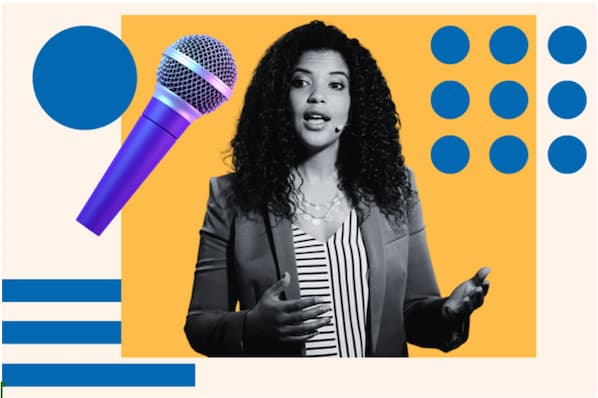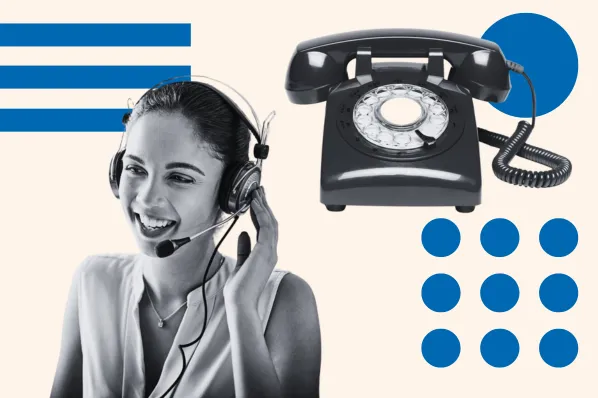In this article, I’ll break down some of the best sales training programs and why investing in training might pay you a better dividend than S&P 500 stocks. (Spoiler: You’ll gain skills that can triple your income.)
You’ll also learn how I used these sales training courses to build the confidence and self-esteem to land higher-paying sales jobs as my energy levels shifted to a higher frequency. Yours can, too.
Table of Contents:
- What is a sales training program?
- Why invest in sales training courses?
- Choosing the Best Sales Training Course: Insights From an Expert
As you can see, there are a wide variety of formats sales training can take and they can hone different skills. The key to finding successful training courses will depend on who is providing the training, your learning style, and the areas you want to grow in.
Improved Sales Performance and Business Growth
I personally don’t know many sales reps who have invested over $100K of their personal funds into seminars, conferences, flights, hotels, lunches, books, podcasts, and coaches — everything that comes with wanting to improve yourself. This makes me uniquely positioned to discuss this topic.
It would also be helpful to provide context and background. As a person who was born to refugee parents who escaped the Vietnam War, and all of the intergenerational trauma that comes with it, I lived a life of scarcity. My father ran away from his problems, so we moved around a lot. He wasn’t the most financially responsible father, which led me to compare myself to my friends’ families and realize that I never want to struggle as much as we did growing up.
This prompted a lifetime of wanting to improve, and my goal was to learn as much as possible — specifically in my sales career. Hence the many trainings I’ve invested in.
While it is not necessary for every individual to invest as much as I did, I guarantee that investing in sales training will lead to improved sales performance and therefore business growth. The better equipped you (and your team) are to address customer pain points, position your product as the solution, and how to connect with the humans on the other end of the phone, the more you will sell and the longer customers will stick around.
Better Customer Relationships
An investment in yourself is ultimately an investment in your customers. I learned how to overcome my inner critic, my limiting thoughts, and imposter syndrome through the courses I’ve taken — and that personal transformation has led me to become a more genuine person with my clients and therefore to have stronger relationships with them.
In this day and age, deals are won and customers become advocates because of the relationships you cultivate with them.
Lower Sales Personnel Turnover
I’ve seen it time and again — sales reps don’t stick around if they don’t feel trained to sell your product or equipped and supported to thrive in their career. So if you’re in a position of leadership, I highly recommend investing in sales training for your reps. Their personal success will lead to overall business success.
Plus, having reps stay with your company long-term saves you the costs of constantly hiring and training new ones — and seasoned reps will sell better because they know your product and target clients inside and out.
Lower Costs of Selling Activities
While sales training demands upfront costs, they pay off in the long run by lowering the costs of selling activities. Imagine how much more efficient a confident, well-trained sales rep can work versus a rookie not using their time well or investing in prospects who are unlikely to convert. Personnel is policy, and the more you invest in this invaluable resource, the more you will reap the benefits.
Choosing the Best Sales Training Course: Insights From an Expert
There are a lot of courses and free content out there, but for me, nothing is as powerful as an immersive training experience. And being in the same conference room for 50–70 hours over a week was intense enough to have a life-changing visceral shift. I’ll share the details below.
These are the courses I took, along with some thoughts on why and how they can make you a better seller.
1. Tony Robbins’ “Date With Destiny”
Tony Robbins is a renowned American motivational speaker, author, and life coach known for his self-help seminars and books like Awaken the Giant Within and Unlimited Power. He specializes in personal development, peak performance, and financial success coaching and works with top athletes, CEOs, and global leaders.
I first heard about Tony Robbins when I discovered his book. A lot of other sellers I met when I was working at LinkedIn and CoachHub would talk about it and how exciting the seminars were. A lot of real estate reps, investors, and brokers are attracted to Tony because he rose to fame for his coaching and he’s one of the fathers of the modern-day coaching industry.
“Date With Destiny” is Tony Robbins’ signature six-day immersive event that goes deep into your values, beliefs, and identity. It’s not sales training in the traditional sense — but if you’re in sales, you know you are your product. The more you master your mindset and heal old stories, the more you show up with confidence, authenticity, and certainty in front of clients.
“Date With Destiny” is a $5,000 investment, but I purchased something called Master University, which is a bundled package that includes a lot of different training and programs. Unlike a typical motivational seminar, this experience is more like an emotional boot camp — you’re not just sitting in a chair taking notes. You’re unpacking old patterns, rewriting limiting beliefs, and defining who you want to be in every area of your life: relationships, career, health, and wealth.
You spend long days (and nights) surrounded by thousands of people doing the same deep work — it’s raw, intense, and genuinely transformational if you show up for it.
Why It Was Worth It
The reason why I paid this large amount of money (that most normal people would consider insane) to take a chance on myself was because people I knew who had taken the training had something “different” about them. I wanted that for myself, and to bring it into my professional life and my personal life.
I was going through depression before my first Tony Robbins event, and I remember feeling so grateful and present. It was a tough time for me because of the consequences of the pandemic, and the training helped me process. I learned how to let go and be optimistic for the future while surrounded by many great people.
2. Landmark Worldwide
Landmark is a personal and professional development organization known for its experiential learning programs that help people break through limiting beliefs and unlock new possibilities in their lives and careers.
“The Landmark Forum” is its flagship course — it’s a transformative 3-day seminar that guides participants through deep self-inquiry, helping them gain clarity, improve communication, and take bold action in areas that matter most.
Here are the primary skills I gained from this training, and how they connect to sales.
Deep, Generous Listening
- Landmark drills home the importance of deep, generous listening — you learn to truly hear what someone is saying, and more importantly, what they’re not saying.
- Sales impact: You’ll become better at catching the subtle cues when a buyer hesitates, or when their true pain point is hidden behind surface objections.
Clear, Uncluttered Communication
- You’ll get practice owning your words, dropping jargon, and speaking with directness. It’s about saying what you mean and asking for what you want — without the baggage of second-guessing.
- Many prospects won’t let down their guard unless you start first, and it begins by owning who you are, not by talking about your experience, but by having an internal confidence we call expert-level energy.
- Sales impact: You’ll run cleaner discovery calls, make bolder asks, and handle objections without taking things personally.
Owning Your Stories
- Landmark helps you see how you create “stories” about people, situations, or rejection — and how those stories shape your results. A lot of times our stories become our reality.
- I remember when I told myself, “I’m a short Asian guy who went to a mediocre college, and I don’t come from wealth. How am I going to connect with these C-suite executives who are white men twice my age?” Here is a more empowering story: “I’m a great listener who is a super connector, actively listening for problems to align our internal resources with. I know I can add value because of the thousands of clients we’ve had in the past with similar situations.” The first one is focused on me and what I perceive to be my shortcomings; the second is focused on how I can serve and ultimately add value.
- Sales impact: When you stop making up disempowering narratives like “They’re ghosting me because I’m bad at this,” you become more resilient, curious, and objective in your follow-up.
Emotional Responsibility
- One of Landmark’s biggest lessons is that you are responsible for how you show up. You stop blaming external factors and learn to respond from choice instead of habit.
- Sales impact: You’ll handle tough conversations, lost deals, and high-stakes negotiations with maturity and less reactivity.
Enrollment
- This is a big one. Landmark is famous for its “enrollment” distinction — the ability to share a vision or possibility in a way that leaves others inspired and willing to act.
- Sales impact: That’s literally selling! You’re constantly enrolling buyers in a new possibility — your solution. Enrollment is powerful because it invites people to a new possibility. It’s something that gets them to take action. That’s the key. That’s why salespeople get paid so much. The ability to get another person to take action, especially because there are so many competing priorities, is truly a valuable skill that is much harder than it looks.
Why It Was Worth It
On the surface, Landmark doesn’t seem directly related to sales, but honestly, the hardest part of sales is not bringing our emotions and projections into the deal, the opportunity, and the partnership. Landmark allows you to have what I call extreme self-awareness, which ultimately makes me more confident about who I am in the conversation.
After Landmark, many reps find they:
- Book more meetings because they ask bigger, bolder questions.
- Handle objections without taking things personally.
- Close larger deals because they’ve learned to “enroll” multiple stakeholders in a shared vision.
3. Jamal Reimers’ Enterprise Sellers
Jamal Reimer is known for selling $50M+ enterprise deals at Oracle and for his book Mega Deal Secrets. He created the Enterprise Sellers Community (ESC) as a global peer network for enterprise sellers who want to master the art of closing very large, complex deals.
The ESC isn’t just another sales forum — it’s positioned as a high-trust, curated group of sellers focusing specifically on mega/strategic deals (often $1M+ in value).
I first heard about Jamal Reimer because he spoke at the Sales Success Summit (more on that later). I noticed his confidence and the unapologetic way he presented himself. When he mentioned he was starting the ESC, I ended up joining the year-long community. The best part about it was that I got paired with a mentor who became one of my closest confidants. That relationship made the whole investment worth it.
Why It Was Worth It
If you are really into making money and like nerding out about deals, then ESC is a good community where everyone is really into the business/financial goals component of being a seller.
Here are some of my highlights from this training:
- Peer-to-peer learning. Members openly share real-world strategies, playbooks, and deal tactics that are hard to find elsewhere.
- Live sessions and masterclasses. Training and discussions led by Jamal and other enterprise sellers who have consistently closed massive deals.
- Community support. A private space to test ideas, get feedback on deal strategy, and troubleshoot challenges with people who truly understand enterprise sales cycles.
- Access to mentors. Direct exposure to practitioners who have “been there, done that” at the top levels of selling.
4. Pavilion (formerly Revenue Collective)
Pavilion (formerly Revenue Collective) is a global membership community for high-growth professionals mainly in sales, marketing, customer success, and leadership roles. It’s built around peer-to-peer learning, so instead of just reading playbooks or taking one-off courses, you get to learn directly from other operators in the trenches, solving the same challenges you face.
I first heard about this training because many of my peers and people I admired were adding it to their LinkedIn profiles. Then, a mentor I had at LinkedIn joined and recommended that I check it out as well.
Why It Was Worth It
As a part of the training, there were different schools or tracks that you could follow, and it definitely exposed me to the world of sales influencers and gave me the opportunity to network with a lot of people. While ultimately this training didn’t go as deep as I would have liked it to, it’s not a bad investment if you’re looking for a lower-cost investment to dip your toe in.
5. Sales Success Summit
The Sales Success Summit is a two‑day in‑person event in Austin, TX designed for sales professionals by sales professionals. All presenters are active quota‑carrying salespeople who are either the #1 producer on their team or among the top 1% in large sales organizations, and they’ve been featured on Scott Ingram’s “Sales Success Stories” podcast.
Why It Was Worth It
Most sales courses are very structured, but the Sales Success Summit takes a more unconventional approach. You’re not just getting coached by “trainers.” You’re experiencing real mentorship from practitioners who’ve done it. You’re learning from top-performing enterprise sales pros who:
- Won numerous awards and are highly regarded as the top person who did it from a place of integrity.
- Have reputations that are mythical in terms of their approach and strategy.
- Are genuine and honest about the emotional and tactical side of the job and can communicate in a way that lands.
The lessons are raw, practical, and grounded in real-life deal cycles.
Funny enough, I landed my current role as the head of business development for Untap Your Sales Potential because Ian Koniak, the founder of our company, was the keynote speaker at the Sales Success Summit I attended.
6. Untap Your Sales Potential
I’ve seen and been through a lot of sales training. Some were great. Most were cookie-cutter. But Ian Koniak’s “Untap Your Sales Potential” stands out for a few key reasons.
I first met Ian Koniak at the Sales Success Summit. His keynote speech, “You are Not Your Number,” made me join his program that same day. And that simple leap of faith forever shifted my trajectory.
In general, I thought that most people in sales (and in life) were always superficial, talking about how amazing their lives were. Just look at LinkedIn or Instagram — sometimes it makes me feel like everyone is trying to get validation, but in reality, they are just putting up a facade.
Then, in his keynote, Ian — who was the best of the best at Salesforce, highly successful, and the cream of the crop — spoke for over an hour about all of his mistakes, why he wasn’t a great father/husband, and what he did to overcome all of his vices.
It was like he was speaking directly to me. Instead of chasing the extrinsic motivators, he asked important questions like, “How do I focus on legacy and execute on my vision?” Ian was a lot different than other reps I had learned from, and his story has always stuck with me.
Why It Was Worth It
Even though at the time I had credit card debt, I decided to commit to the program. A part of me was scared, but I knew I would figure out a way to make it happen, and I’m glad I did because my marriage, career, and legacy are in a much better place because of it.
This is the training that helped me silence my inner critic. I stopped feeling like an imposter because I could finally speak and be honest with people instead of putting on the corporate facade.
I gained so much as a client of Untap Your Sales Potential, and now I am the head of business development at Untap Your Sales Potential. Talk about a trajectory that I couldn’t have seen coming.
You’re closer than you think.
If you’ve ever felt that same doubt I felt — like you’re “faking it” in big rooms with big buyers — you’re not alone. But the difference between surviving and thriving in this role is how fast you commit to growth.
I chose to invest in myself. And now, after the trainings I talked about in this article, I walk into conversations with clarity, confidence, and a much deeper understanding of how to win in the rooms that matter most.
If you leave this article with nothing else — now is your moment. Just take action.
Editor's note: This post was originally published in October 2023 and has been updated for comprehensiveness.
Sales Training


.png)
-Sep-24-2025-08-06-04-5244-PM.webp)
![If You Want to Become a Sales Rep, Here’s Everything You Need to Know to Get Started [+ My Tips for First-Time Reps]](https://53.fs1.hubspotusercontent-na1.net/hubfs/53/how-to-become-a-sales-rep-1-20250220-6590438.webp)




![Virtual vs. In-Person Training: Pros & Cons of Each [New Data]](https://53.fs1.hubspotusercontent-na1.net/hubfs/53/inperson-vs-online.webp)


![How to Get Into Sales Without a Degree [+ 7 Expert Tips]](https://53.fs1.hubspotusercontent-na1.net/hubfs/53/sales-job-degree%20(1).jpg)